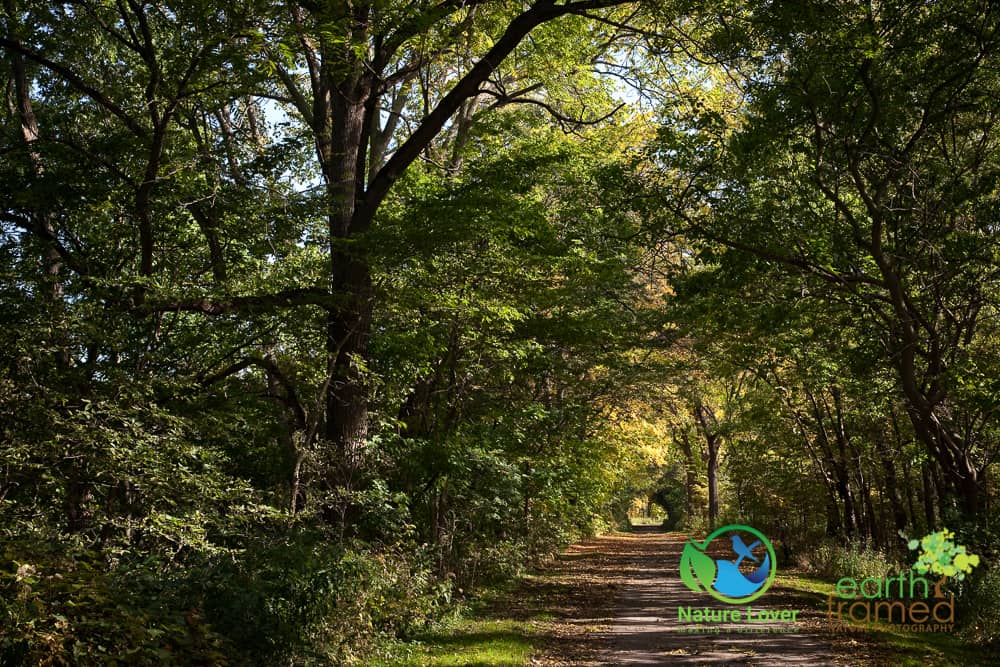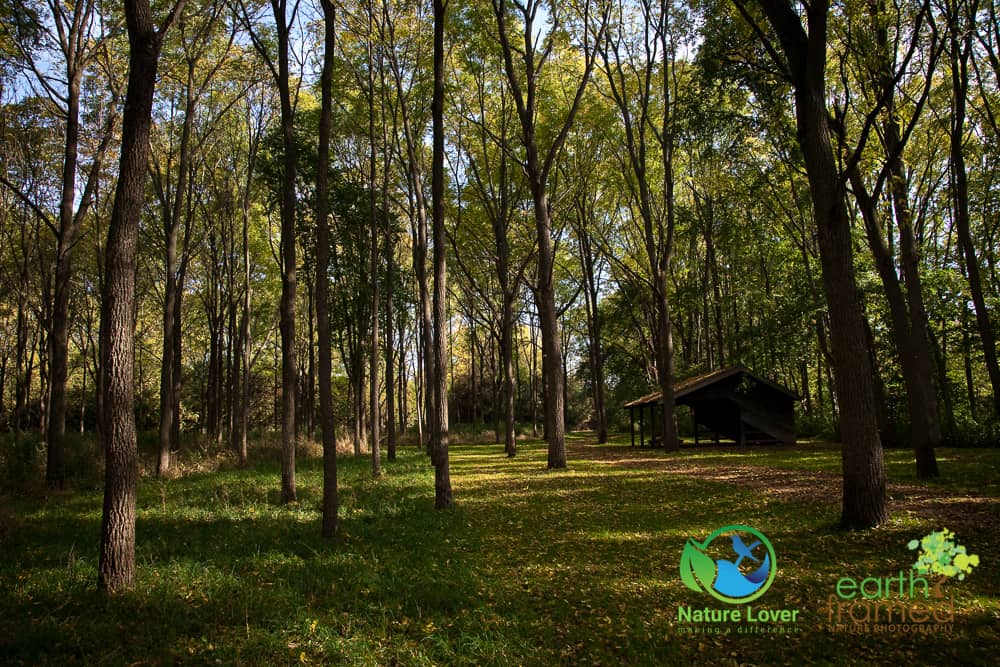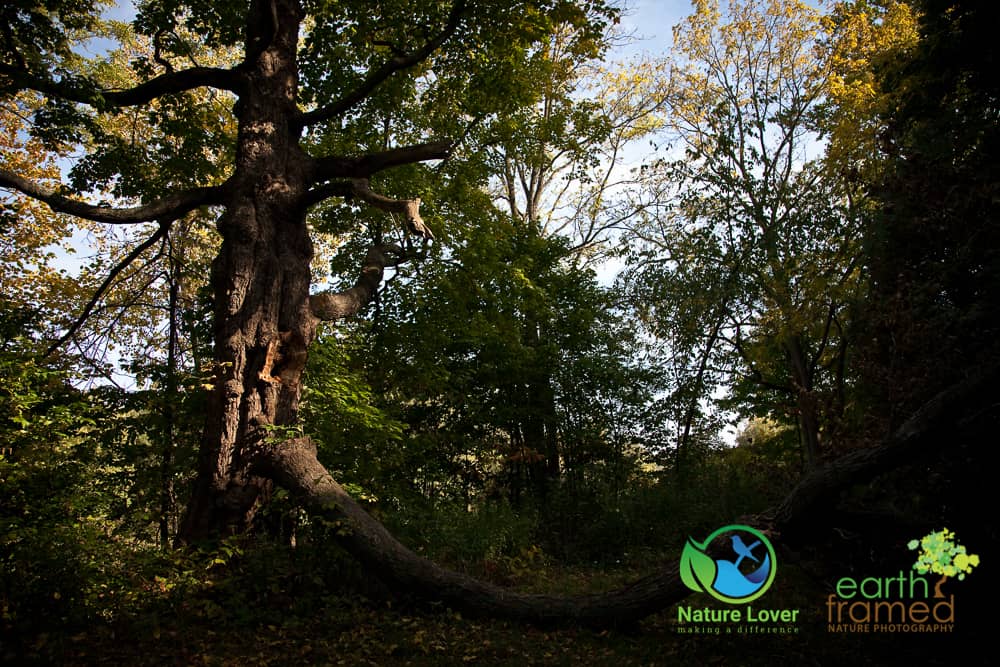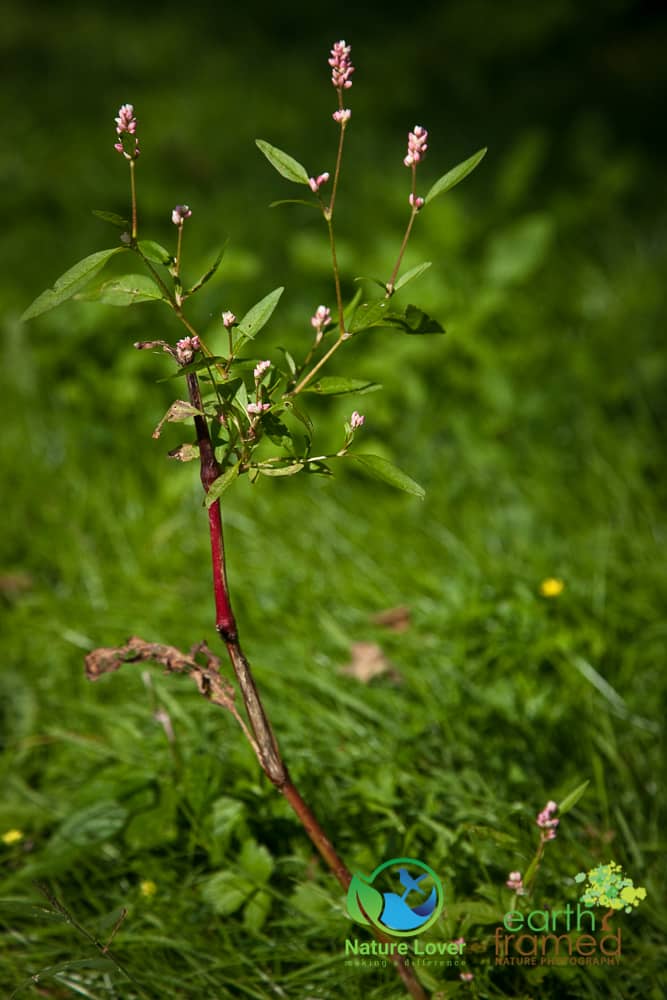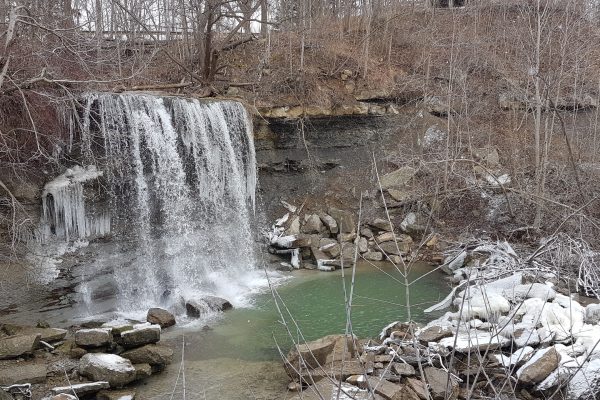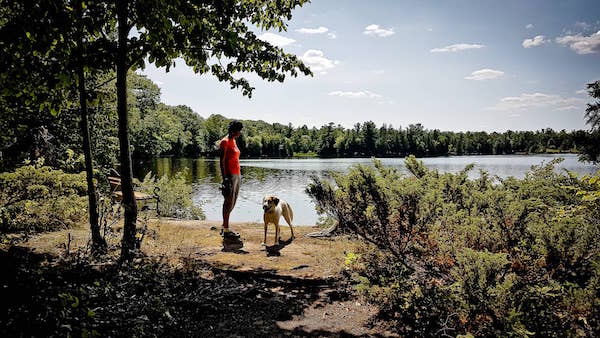It was an especially beautiful fall day that we decided to go on a tour of some natural areas within an hour of home. After hiking a part of Mosa Forest and checking out Wardsville Woods, we stopped at the Big Bend Conservation Area. The park has free entry and is only about 16 hectares in size. We downloaded the brochure that told us that over 3,000 years ago this area was a gathering point for First Nations people. We didn’t see any archaeological evidence or signs that pointed to any specific dwellings or any information about this at the park.
As with most parks, there are basic guidelines posted at the entrance. We only saw two or three other people at the conservation area while we were there and except for a very clean privy, there were no facilities available this late in the fall. 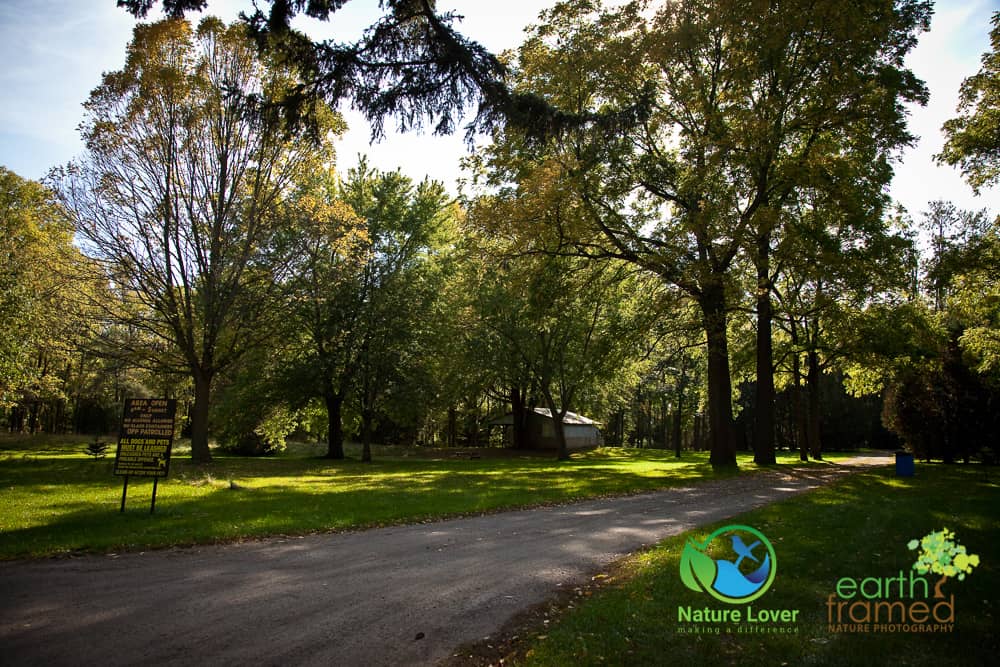
As we entered the peninsula shaped park we saw places to camp, bathrooms and a few pavilions. None of the ‘campsites’ were formally marked and you could only tell where they were suppose to be by a fire pit and picnic table at the centre of each site. The brochure says that there is “group and family camping(no reservations are necessary, but fees arecollected on a regular basis)”.
The road that lead to the secondary camping and day use area was absolutely breathtaking. The way the trees created a canopy over the road and gave the illusion of a tunnel at the end reminded me of many roads we travelled in Ireland.
After parking just off the road near the Picnic Shelter, we got out to walk around and check out the place. We saw White Elm, Black Willow and huge Eastern Cottonwood trees throughout the park.
 We had the park almost completely to ourselves. The park was quiet, inviting and simple. There was only one trail marked on the brochure that was wide and unmarked but very short and would be good for children, strollers, walkers or groups. This is not a park to visit if hiking is your main passion.
We had the park almost completely to ourselves. The park was quiet, inviting and simple. There was only one trail marked on the brochure that was wide and unmarked but very short and would be good for children, strollers, walkers or groups. This is not a park to visit if hiking is your main passion.
Check out this enormous fallen branch. The large, swooping branch literally fell off the tree where it joined the trunk. 
The hole at the base of this twin Cottonwood was so large that I could have hid in it to shelter from a rain storm. I knocked on parts of the tree and found large portions of the base to be hollow and dead. I fear the next time we venture out to this park we may find this tree laying in the river.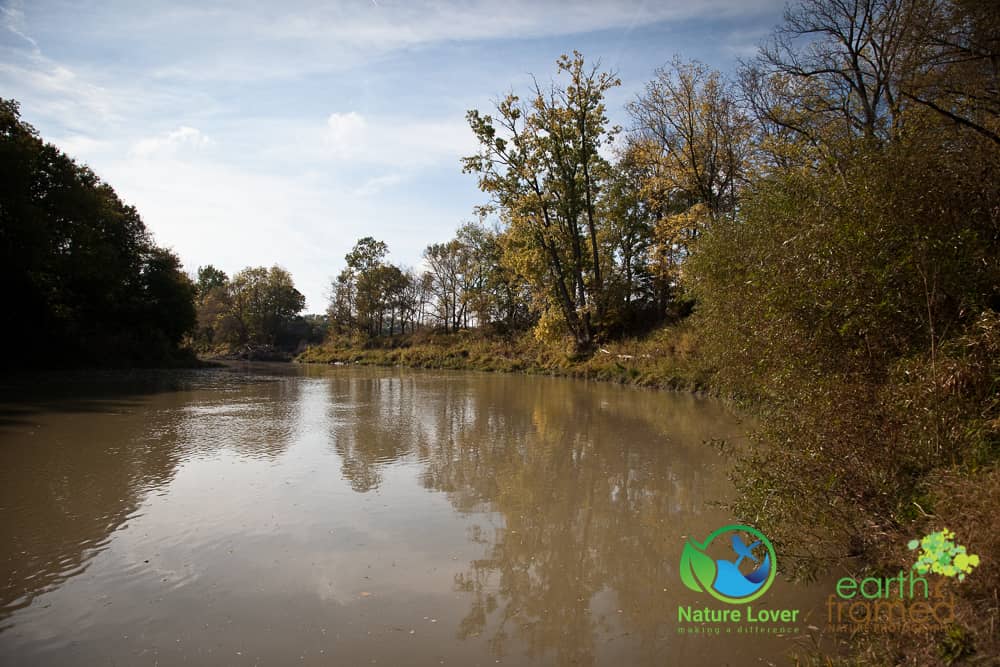
This is a view of the Thames River from the boat launch. It was very wide at this section and impossible to tell how deep considering the colour of the water. Some people may immediately assume the water is brown because it is polluted, but there are a number of natural reasons for different water colour. Water appears blue usually because it has a very small amount of dissolved particles in it. Minerals, soil runoff, sediment or algae may affect the colour of water. Of course pollution is always a possible cause, but it isn’t always the culprit.
Near the boat dock we saw a few different wildflowers still blooming, including this Smartweed.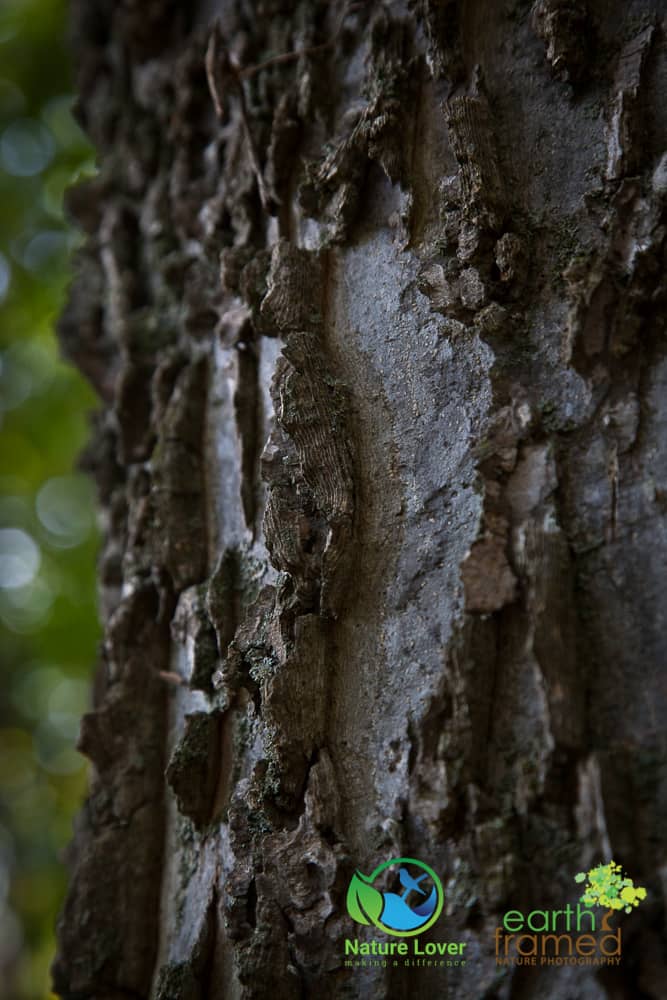
As we were exploring this small but quaint park we were trying to identify the tree species using not only their leaves but also their bark. With winter fast approaching, there will be no leaves, seeds or fruit to use to identify tree species, so we thought we would start early. The bark above was very interesting with its ridges and smooth areas. 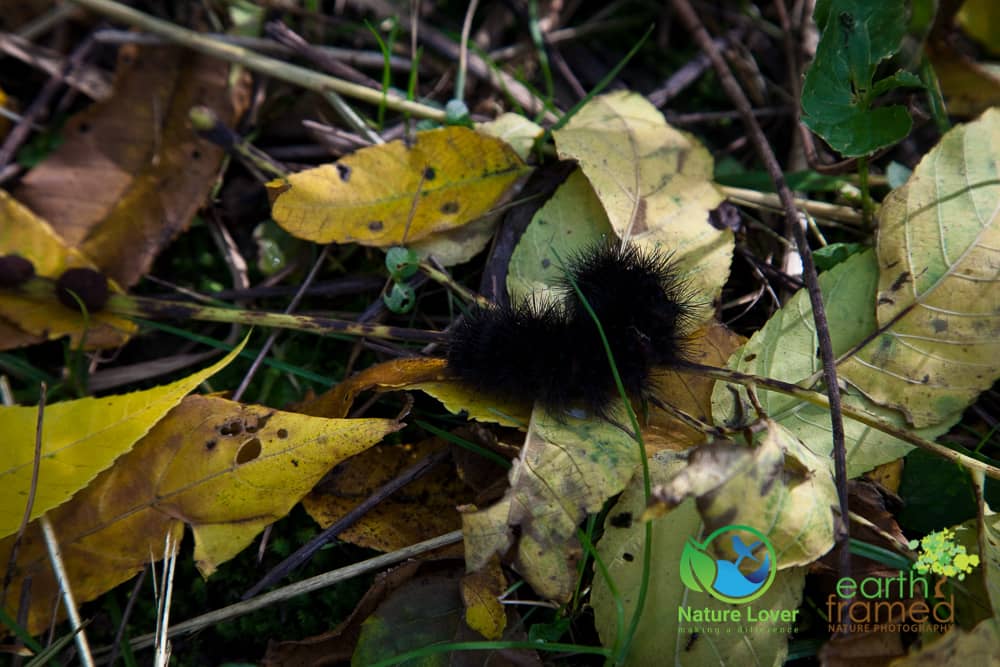
Near the picnic shelter I spotted this large, black caterpillar making its way across the path. It appeared to be all black with dense, spiky hair, no pattern and I didn’t notice any distinct features that I could have used to identify it. It was probably two plus inches long, one of the larger specimens I have seen. Using the basic information that I had, I went to the ID nature guide section of Discover Life to see if I could find it. As far as I could tell this may be Harnessed Moth larva. 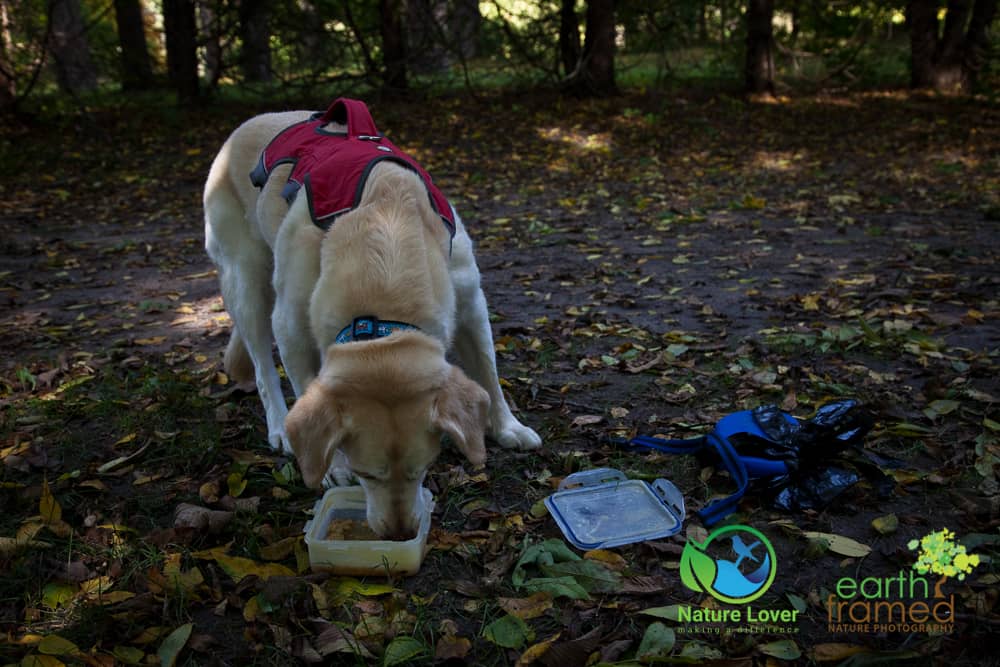 Before heading home for dinner we gave Maya a nice bowl of warm soup and rice. Older dogs need to get enough liquids, calories and loving to help them make it through days of intermittent hikes. However, while you are giving them special treats, make sure to keep in mind that a healthy weight is also very important for their internal health and their joints.
Before heading home for dinner we gave Maya a nice bowl of warm soup and rice. Older dogs need to get enough liquids, calories and loving to help them make it through days of intermittent hikes. However, while you are giving them special treats, make sure to keep in mind that a healthy weight is also very important for their internal health and their joints.
The Big Bend Conservation Area is a nice, quaint spot that we would recommend for a picnic and it may be a great spot to head out in a canoe. If you are looking for interesting trails, a place to swim or other activities, you may want to keeping driving.




